Rivers, exhaustion, violence, and suicide leave the smell of death in Darien
Number of migrant bodies removed from the jungle between Colombia and Panama is only a small fraction of those succumbing to the crossing
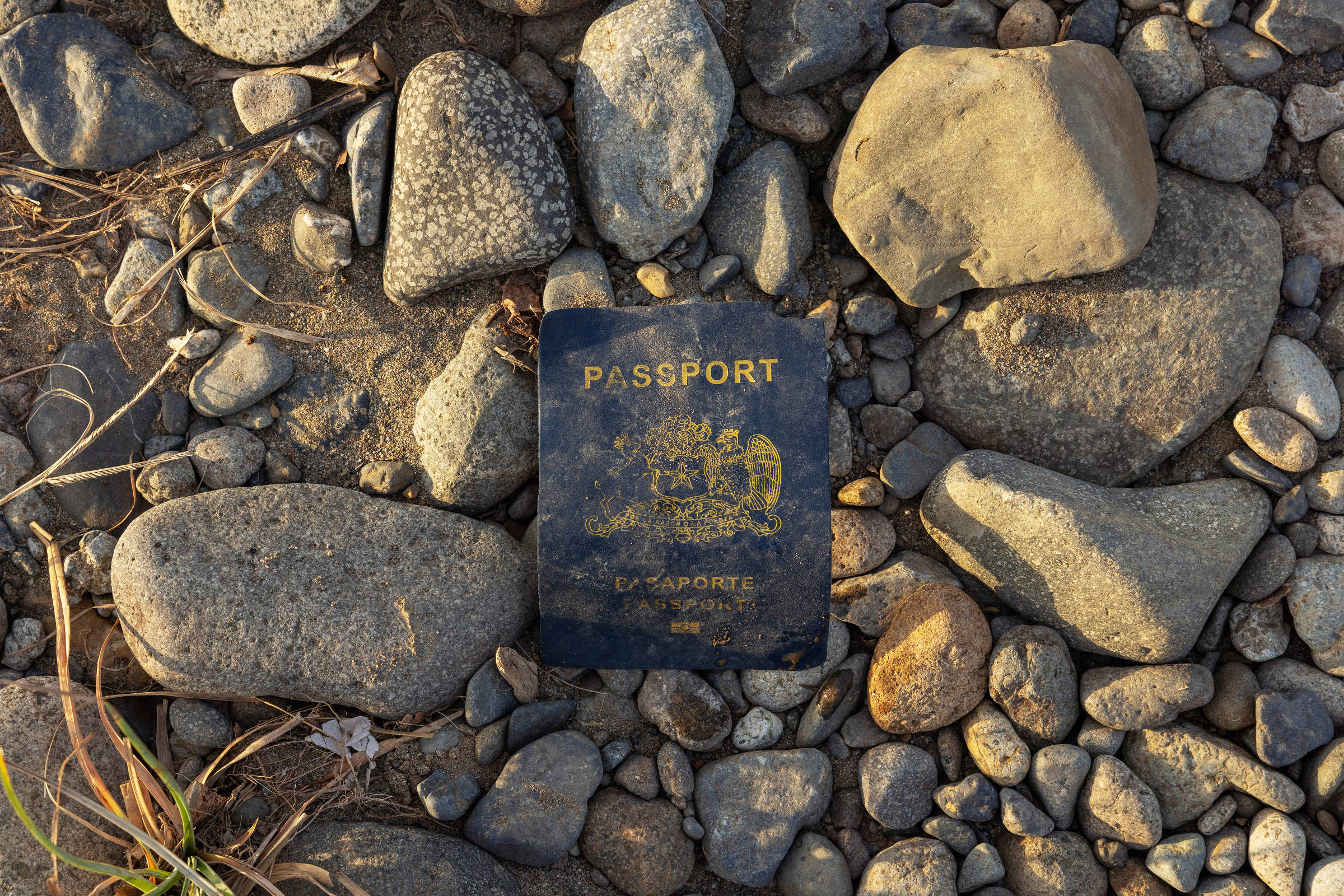
Number of migrant bodies removed from the jungle between Colombia and Panama is only a small fraction of those succumbing to the crossing
At 61, Gustavo Vieras became famous on TikTok. Despite speaking calmly, the reason for his fame was far from good: this Venezuelan native of Maracay, 120 km west of Caracas, spent 25 days injured in the inhospitable jungle of Darien.
Vieras entered the forest separating Colombia from Panama on December 13 last year and only emerged on January 6, when he was finally rescued by “Cala 66,” an indigenous person paid by his son to find and get him out of there.
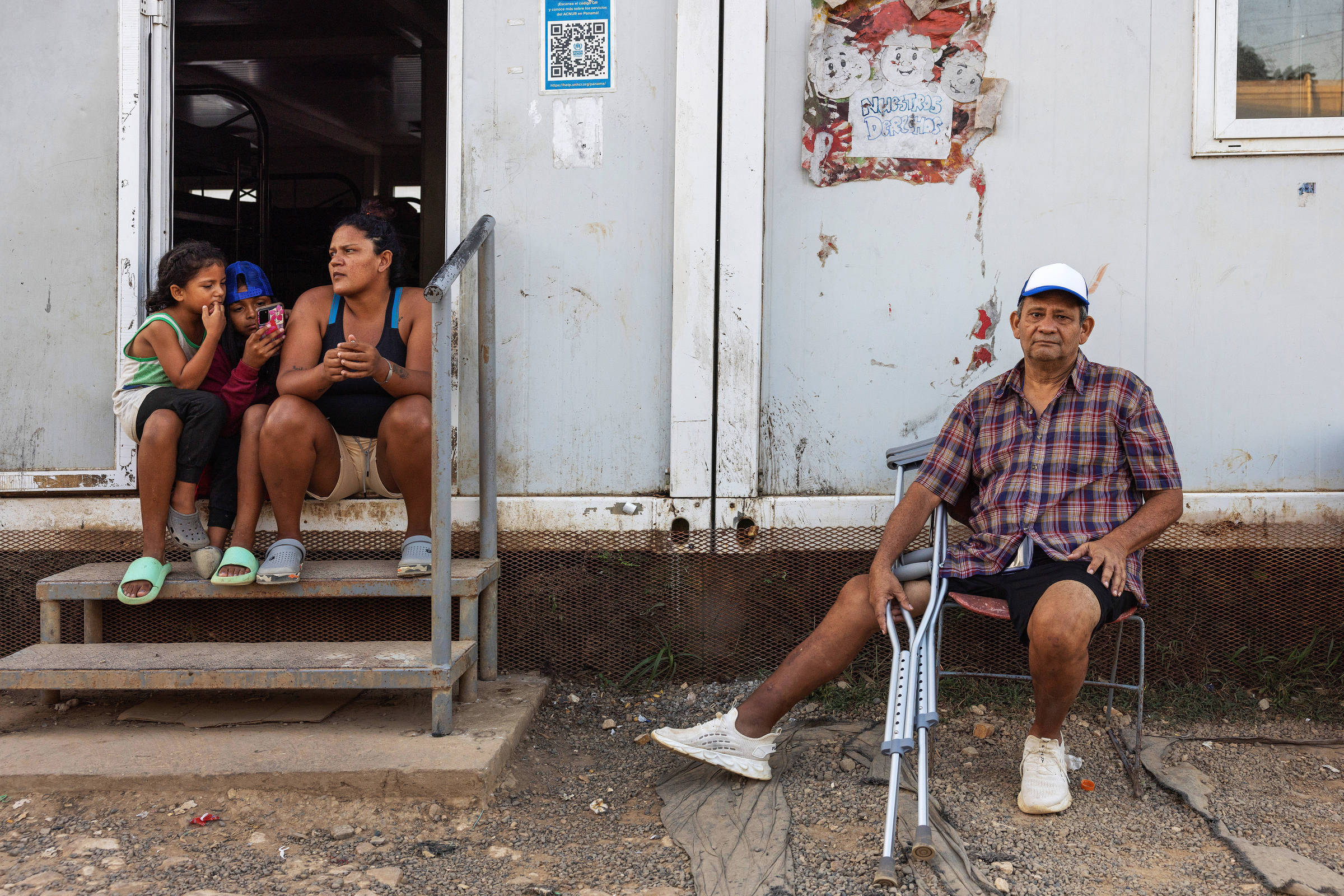
The Venezuelan Gustavo Vieras, 61, who spent nearly a month injured in the jungle, is recovering at the San Vicente Migratory Reception Station in Panama - Lalo de Almeida/Folhapress
While in the jungle, he was approached by several migrants making the crossing, who filmed him to tell his story on the platform that now gathers the largest volume of information (much of it false) about Darien. “Many gave me food, helped me move forward a little.”
A former banker, Vieras earned in Venezuela a pension that barely covered his food: 130 bolivars (about US$4, or R$20) plus another approximately US$60 (R$300) from the “economic warfare bonus” distributed by Nicolás Maduro’s regime to mitigate the effects of the crisis. To supplement his income, he worked at a market stall. Until his 35-year-old daughter, along with his 2-year-old granddaughter, indicated a desire to go to Mexico, where another of his sons lives. Without prospects, Vieras accompanied them.
However, in a December of heavy rains in the region, which make Darien even muddier and more slippery, he fell and fractured one of his ankles.
“I couldn’t walk anymore. My daughter and my little granddaughter couldn’t stay there. I asked them to go for help. During that time, I never feared, I had faith that I would get out of there,” the Venezuelan recounts, sheltered at the San Vicente Migratory Reception Station.
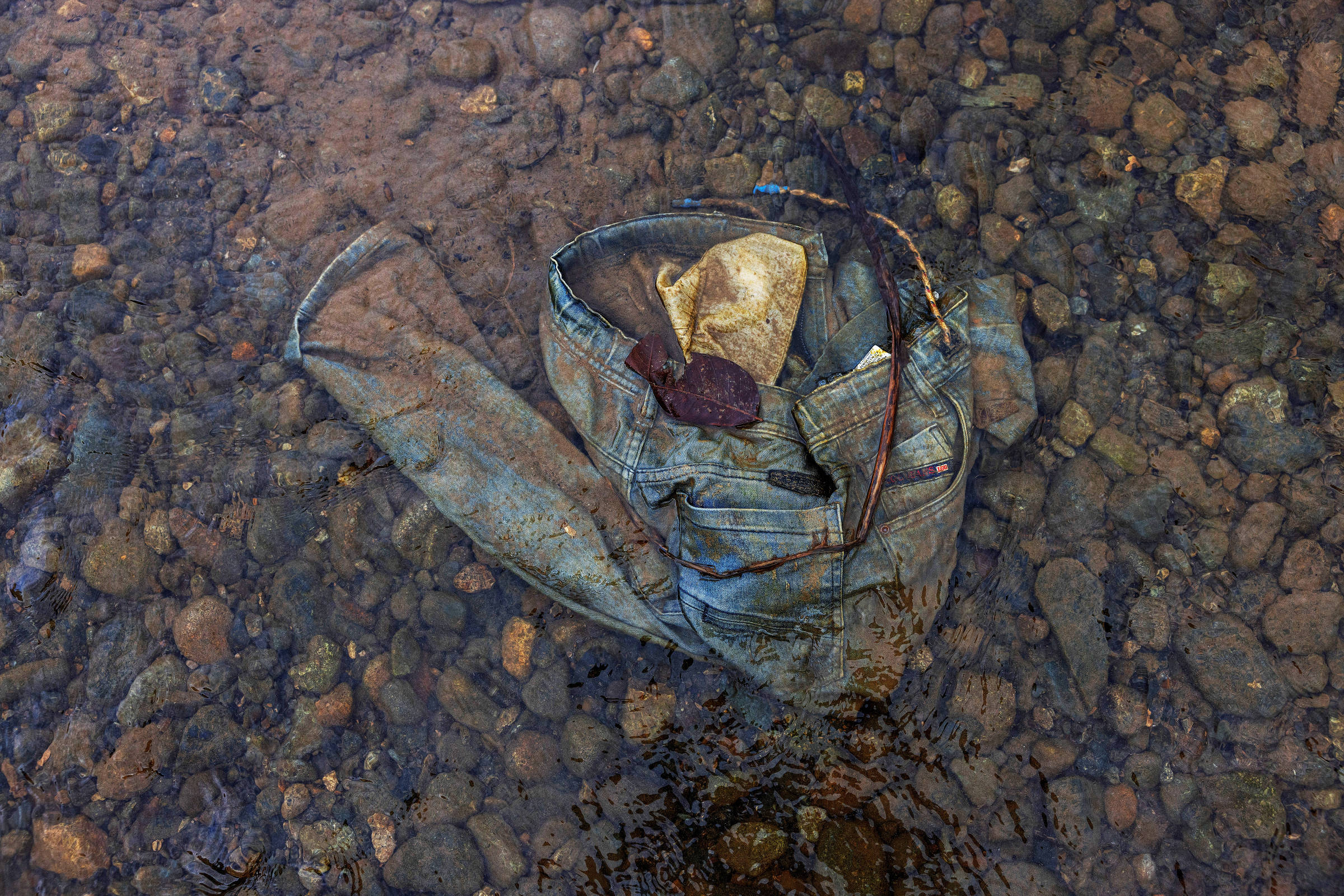
A migrant’s pair of jeans left behind in the Tuqueza River, close to the community of Bajo Chiquito, emblematic of the transformative impact of migration - Lalo de Almeida/Folhapress
Even faith did not prevent him from seeing the worst of what the forest has to offer. He heard reports of violence-physical and sexual. He witnessed the exhaustion of migrants and, above all, encountered death. “I saw many dead in the river. I don’t know if the river pulled them, if they fell, but there were many.”
The Darien jungle, through which more than 520,000 people crossed in 2023, leaves an unknown number of dead along the way. Among migrants, there is talk of the “smell of death,” the result of the putrefaction of bodies that remain for days, weeks, months, and years in the forest.
One of the few databases that count victims in the jungle, the UN’s Missing Migrants project, shows that at least 366 have died in Darien in the last ten years. The survey acknowledges that the count is highly underreported.
The main cause of deaths (163) is drowning in the Tuqueza River.
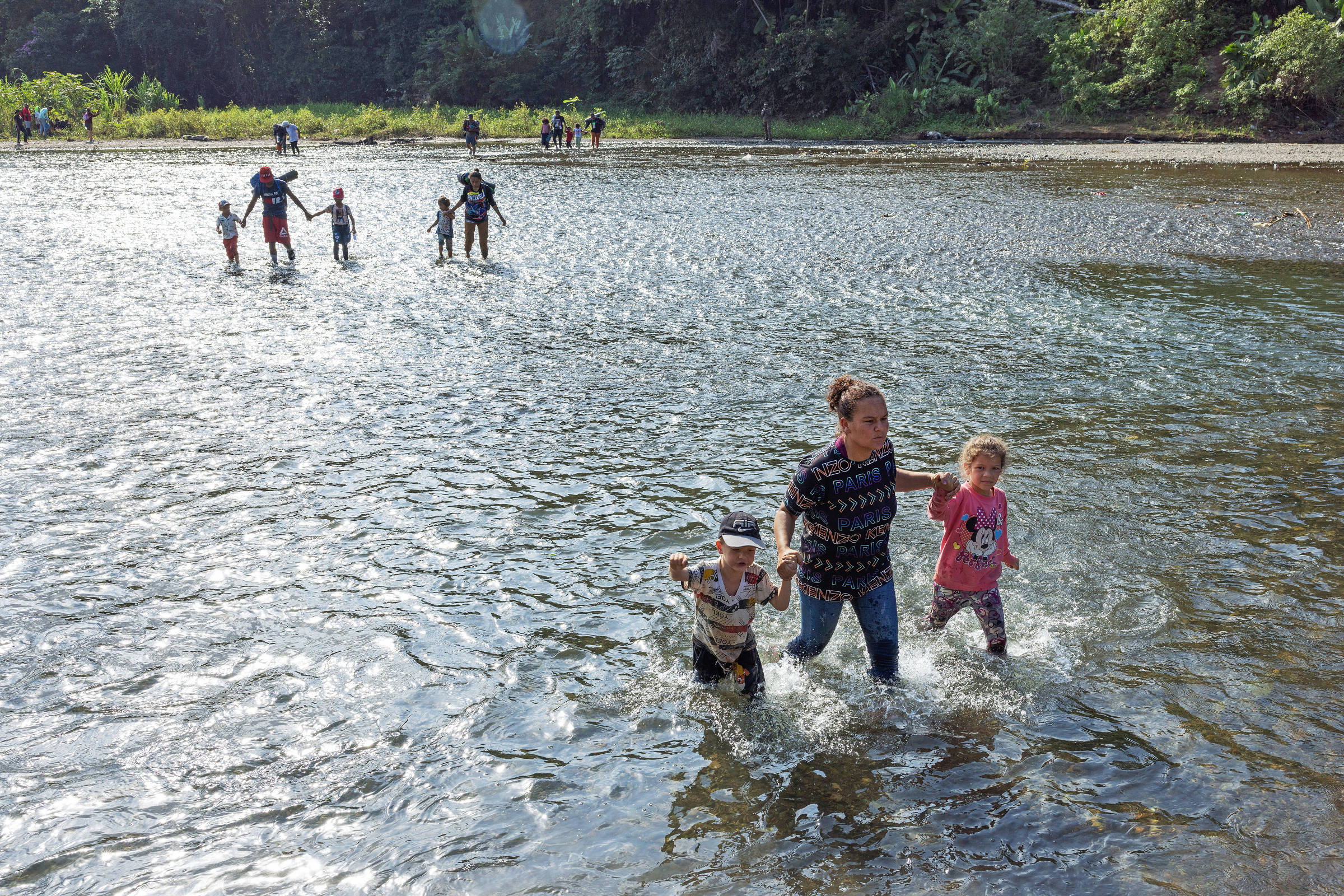
Venezuelan migrants who do not have money to pay for the canoe trip from Bajo Chiquito cross the Tuqueza River to begin the nearly 25 km walk to the Lajas Blancas Migratory Reception Station - Lalo de Almeida/Folhapress
“The jungle bears witness to both death and life in this enormous migratory flow,” says Commissioner Edgar Pitty, head of the 1st Eastern Brigade of Panama, at the regional headquarters of Senafront (National Border Service). After all, his team has already conducted numerous body rescues and some deliveries in the middle of the jungle.
Pitty points out the danger that rivers represent. “To avoid getting lost in the jungle, many think that following the course of the rivers, as a kind of guide, is the safest. And the risk is great for those who sleep on the banks,” he says, referring to the so-called flash floods (sudden increase in the level of a river), which take migrants and their belongings without giving them time to think.
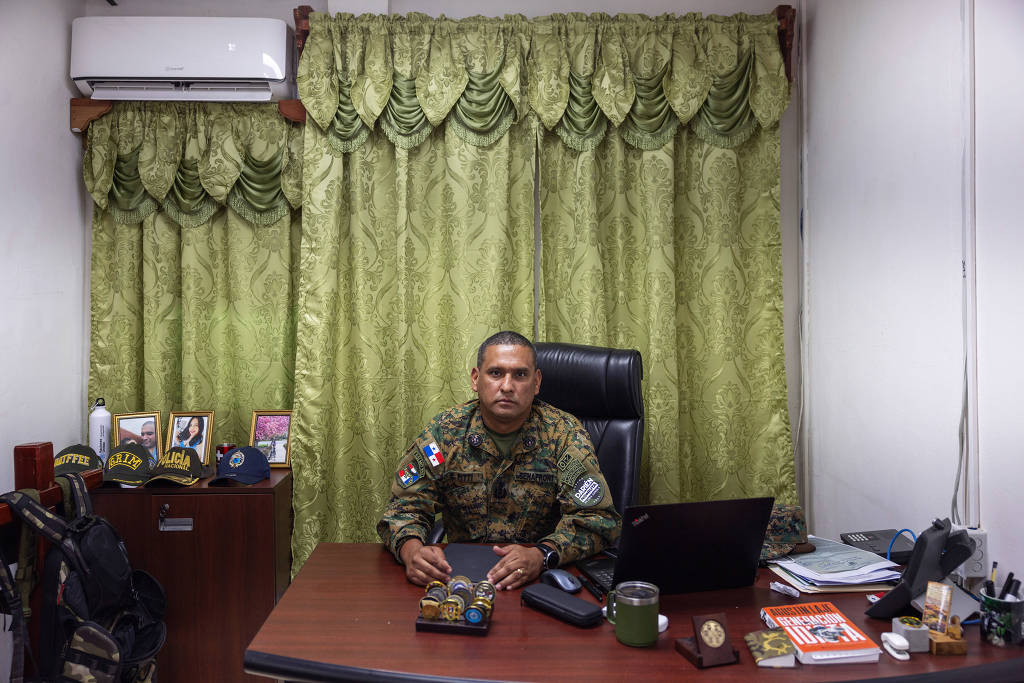
Commissioner Edgar Pitty, head of the 1st Eastern Brigade of Panama, at the headquarters of the National Border Service in Metetí - Lalo de Almeida/Folhapress
Many deaths occur for less apparent reasons. Several immigrants report witnessing women, especially, who committed suicide after seeing their children die in the jungle. Nor are there few victims of complete exhaustion in the average crossing of 100 km from the Colombian side to the Panamanian community of Bajo Chiquito, a journey made by boat, canoe, and on foot.
Finally, there is crime. In the first stretch of the jungle, the migratory flow is controlled by the Gulf Clan. With about 9,000 members, Colombia’s main cartel today dominates the Gulf of Urabá. As the region is also a drug trafficking route, the Gaitanistas, as they are known, suppress cases of violence to prevent their activities from attracting attention.
On the Panamanian side, however, reality changes, and the forest falls under the control of small indigenous gangs. Of the migrants who cross the jungle, 88% report that episodes of abuse come from local communities, according to a survey of 900 people recently published by the Mixed Migration research center.
Darien has been neglected territory for decades by the state. Panama disbanded its Armed Forces after the United States invaded the country in 1989-the so-called Operation Just Cause, under the argument of overthrowing Manuel Antonio Noriega’s narcodictatorship (1934-2017).
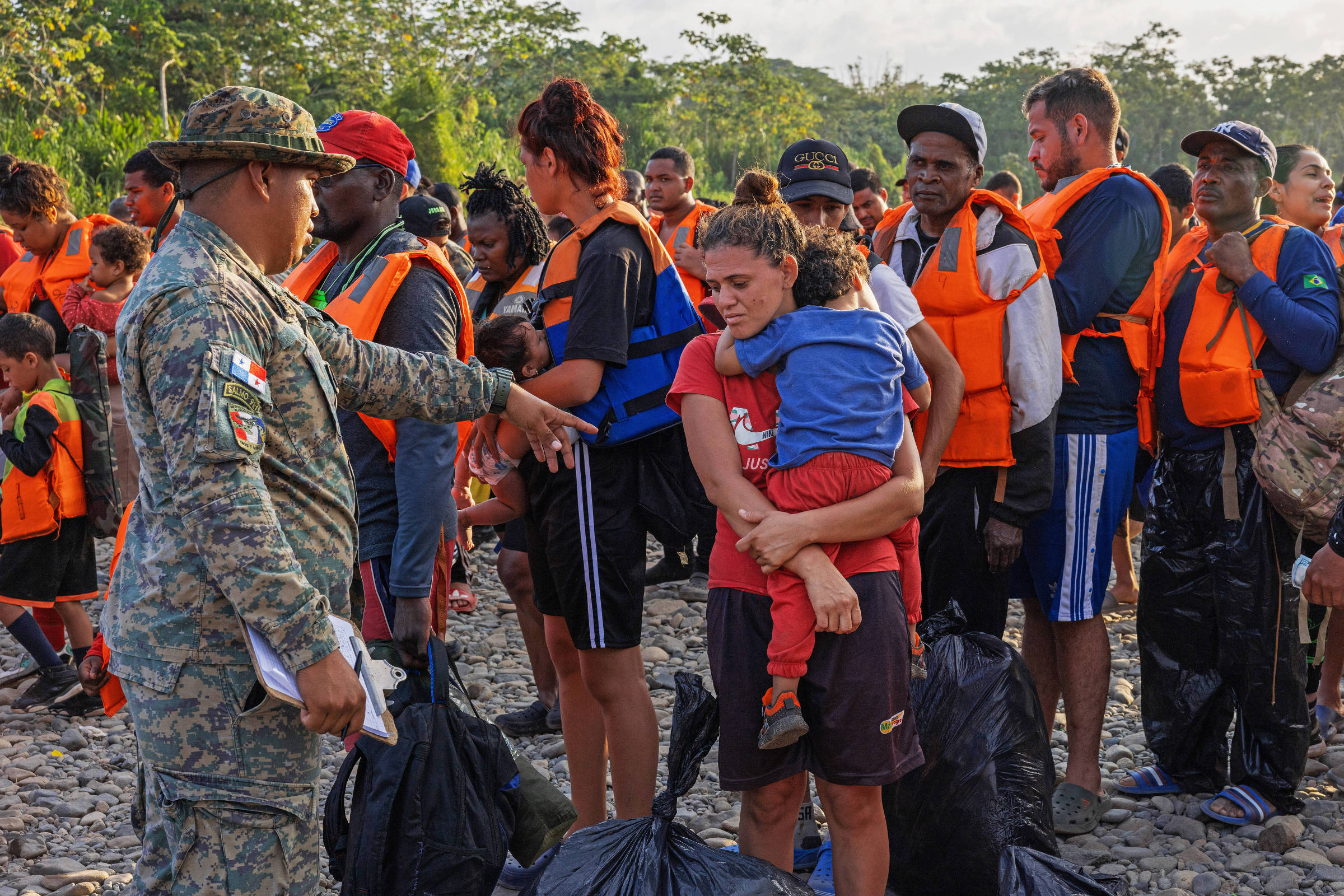
An officer from the National Border Service of Panama coordinates the queue of migrants awaiting boarding onto a canoe in the community of Bajo Chiquito - Lalo de Almeida/Folhapress
Senafront, the current border protection service to which Commissioner Pitty belongs, was created only in 2008, when the need had already been pressing for some time. Armed groups from Colombia had been using Darien as a refuge and often entered Panamanian territory.
“In 2010, we had several invasions, we even had mined areas,” says Pitty. “I have colleagues without legs because of these artifacts. In 2013, we managed to expel them all.”
Nevertheless, state presence in the jungle is still sparse, and impunity is the rule in episodes of violence. Throughout 2023, Doctors Without Borders (MSF), one of the organizations operating in the region, recorded 675 cases of sexual abuse of immigrants in Darien, compared to 232 the previous year. These figures are widely underreported. On the 7th of last month, MSF announced that it had been forced by the Panamanian government to close its operations in Darien due to the lack of renewal of a contract with the local Ministry of Health.
José Vicente Pachar, director of the Legal Medicine Institute of Panama, says that since 2019, it has been necessary to constantly increase the capacity of the La Palma morgue, where bodies rescued from the forest go.
“The first challenge is to identify them. Corpses decompose even faster due to jungle conditions-high temperatures, high humidity, and animals that tear apart the bodies,” Pachar says. “We also do not have material to compare with their genetic information. Many arrive without documentation because their belongings are stolen as soon as they die.”
It is impossible to determine the main cause of death, “because the bodies are already rotten,” says Pachar. Nevertheless, he describes what he sees most. “There are many traumas and drownings, but also violent deaths with firearms and sharp weapons. Not to mention the number of women and girls sexually abused.”
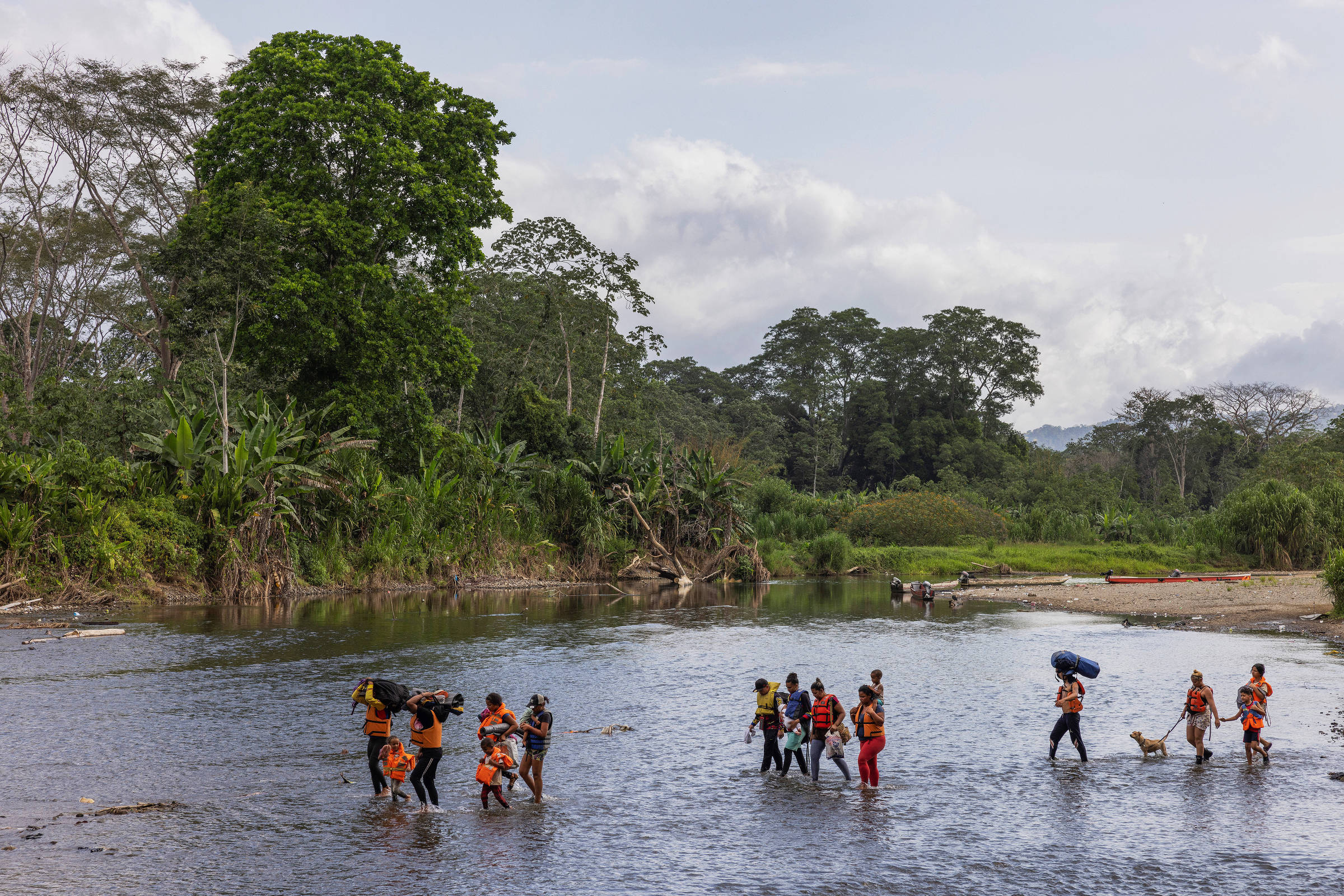
Migrants cross the Tuqueza River to reach the canoe, or piragua, boarding area and continue their journey - Lalo de Almeida/Folhapress